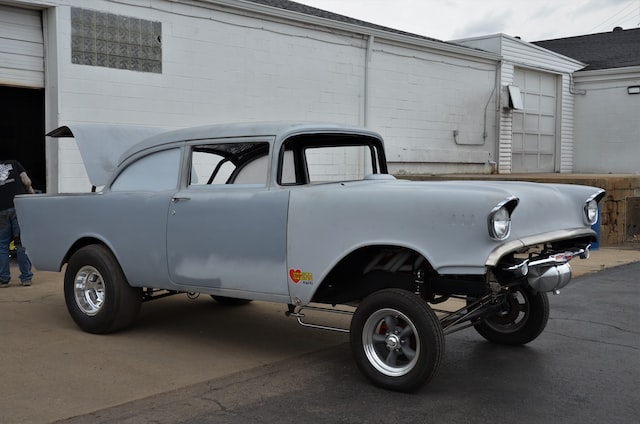Have you ever considered how many axles a car has? Although it can seem like a straightforward question, the solution may be trickier than you think. The axle is one of the most crucial and essential parts for all vehicles. Below, we’ll examine the many axle configurations that automobiles may have.
With my extended expertise in the automotive industry, I will share valuable information for everyone, whether you’re a vehicle fanatic trying to further your knowledge or just interested about how your vehicle operates.
Table of Contents
What is an axle?
An axle is a central shaft that links a vehicle’s two wheels. It supports the wheels and aids in distributing the weight of the car equally across each one. In order for the vehicle to go forward or backward, the axle is also in charge of transferring power from the engine to the wheels.
It also has the ability to act as a steering axis, allowing the wheels to turn left or right. Depending on the type of vehicle, the axle design might change; some have only one axle, while others have many axles.
How many axles does a car have?

A car usually has two axles, one in the front and another in the back. These axles distribute the vehicle’s weight equally among the wheels by connecting them to its body. The front axle is in charge of guiding the vehicle, while the rear axle transfers engine power to the wheels so that the vehicle may drive forward or backward.
However, some cars may have additional axles depending on their design and intended use.
For example, trucks and pickups have additional axles that transmit power to all wheels. This provides better traction and stability on slippery or uneven surfaces. Nonetheless, most everyday cars have two axles that provide adequate performance for typical driving conditions.
Types of Axles
Most cars and trucks need axles, which come in various types with varying characteristics and uses. In this part, we’ll examine the many axle types cars have.
Front Axle
In the majority of front-wheel-drive cars, the front axle is a crucial part that’s also in charge of steering. An independent suspension system that enables each wheel to move independently can be used on the front or solid axles.
Both wheels are connected by a solid front axle, which causes them to revolve in unison when turning.
This type of design can decrease traction and stability on smooth or uneven ground. It also offers a more simple and more affordable construction.
Independent suspension systems allow each wheel to move independently for enhanced traction, stability, and comfort. Moreover, their production and repair may be more costly and challenging.

Rear Axle
In most cars with a rear-wheel-drive system, the rear axle plays a crucial role in transferring power from the engine to the back wheels. Depending on the vehicle’s usage, the rear axle can either be a live or a dead axle.
A live axle links both wheels to the car’s body and transfers engine power to the wheels to improve traction and stability when driving off-road or under large loads.
A dead axle, in contrast, joins the wheels to the car’s body but doesn’t transfer engine power. Dead axles are frequently utilized in trailers and semi-trucks to contribute to the cargo’s support and increase stability.
Live axle
The live axle is frequently used in trucks, SUVs, and off-road vehicles, where high ground clearance and big loads need optimal grip and stability. The live axle connects both wheels to the car’s frame and transfers engine power to the wheels. It helps improve grip and stability in off-road and heavy-load situations.
The live axle’s design can offer superior off-road performance, but it can also be less comfortable and efficient than other types of axles since it needs more power to function.
Dead Axle
The dead axle is frequently used in trailers and semi-trucks to increase stability and offers additional support for the load. The dead axle joins the wheels to the vehicle’s body but doesn’t transfer engine power.
Due to the lack of a power transmission, dead axles are often less costly and simpler to use than live axles. They may, however, also be less effective and offer less traction, particularly in icy or off-road conditions.
Stub Axle
A stub axle is a form of axle frequently used in lightweight vehicles with a tight turning radius, such as motorcycles and ATVs. The wheel may spin along the steering axis thanks to the stub axle, which joins the wheel to the body.
The stub axle is ideal for vehicles that need to move quickly and with agility because of its lightweight and compact construction. It may not be appropriate for large loads or difficult terrain due to its tiny size, making it less sturdy and lasting than other axles.

CV Axle
The CV axle is frequently used in front-wheel-drive and all-wheel-drive vehicles when the front wheels need both steering and power transfer. The CV axle employs constant velocity joints to transfer power from the engine to the wheels, resulting in increased traction, stability, and a smoother ride.
Each wheel may move independently, thanks to the CV axle’s design, which improves grip and handling in slick or uneven situations. The CV axle, however, can also be more difficult and expensive to fix than other types of axles.
Differential Axle
The differential axle is frequently seen in rear-wheel-drive cars, enabling the wheels to rotate at various rates when turning. This is required because turning requires the outer wheels to revolve more quickly than the inner wheels.
The differential axle employs a differential gear to equalize the torque between the wheels, enabling them to revolve at various speeds. Its design improves stability, control, and handling, particularly while turning or traveling over rough terrain.
Nevertheless, differential axles require precision engineering and exact tolerances to work properly, making them more difficult and expensive to construct and maintain than other types of axles.
How to know if you have a bad axle
A defective axle may create a broad range of difficulties and can possibly threaten the safety and performance of your vehicle. The following are some of the most typical signs of a damaged axle:

Vibration
It might be a symptom of a damaged axle if you notice severe vibrations when driving, especially at high speeds. Axle parts like bearings or CV joints that are worn out or broken are usually the source of vibrations.
Clicking or popping noises:
If you hear clicking or popping noises while turning or accelerating, it could indicate a bad CV joint. CV joints transfer power from the transmission to the wheels and can wear out over time.
Difficulty turning:
It may indicate a damaged axle if you have problems turning your car, especially at low speeds. This is frequently brought on by worn-out or broken bearings, which might impair the axle’s smooth performance.
Uneven tire wear:
If your tires have uneven wear indicators, you could have an axle problem. This is because a defective axle can tilt or lean the wheels, which causes uneven tire wear in the long term when you drive your car.

Fluid leaks:
The seal may be cracked if you observe fluid dripping from your axle. Overheating or contaminating other parts are two classic issues that might result from a fluid leak from your axle.
If you experience any of these symptoms, having your vehicle inspected by a qualified mechanic as soon as possible is important.
Ignoring a bad axle can lead to further damage, more expensive repairs, or even accidents. Regular maintenance and inspections can help prevent axle problems and ensure your vehicle remains safe and reliable.
FAQs
I’ve listed the most frequently asked questions about axles:
What is a 2-axle vehicle?
Two-axle vehicles are frequently used for personal transportation, including automobiles, SUVs, and pickup trucks, and for business purposes, such as buses or small delivery trucks.
How many axles does a 4-wheel drive have?
Similar to 2-wheel drive vehicles, 4-wheel drive vehicles normally have two axles: one in the front and one in the back. Furthermore, a lot of four-wheel drive cars include locking differentials or other technologies that can aid in increasing traction and control even further.
What does 1 axle mean?
One axle means that there’s one shaft that connects two wheels on opposite sides of a vehicle. The axle provides support and stability to the wheels and allows them to rotate together, providing propulsion and steering.
Does a car have 2 CV axles?
The majority of front-wheel-drive cars are equipped with two CV axles, one on each side of the car. The front wheels can spin and adjust their height in response to the suspension thanks to the CV axles, which also transmit power from the gearbox to them. In most cases, rear-wheel-drive vehicles have one driveshaft and one or two rear CV axles.
Conclusion
In conclusion, axles are essential components of a vehicle’s drivetrain and suspension system, providing traction, support, stability, and steering to the wheels.
The type and number of axles in a vehicle depend on the vehicle’s size, purpose, and drivetrain configuration. Each type serves a specific function and requires different maintenance and repair procedures, from the front and rear axles to stub, live, dead, CV, and differential axles.
Identifying common signs of a bad axle can help you, and other vehicle owners stay safe and prevent further damage. Regular maintenance and inspection of axles can also help prolong the car’s lifespan and ensure a smooth and safe driving experience.
Understanding the basics of axles can be useful for anyone who drives or works on vehicles, providing a foundation for a better understanding of how vehicles work and how to keep them running at their best.
